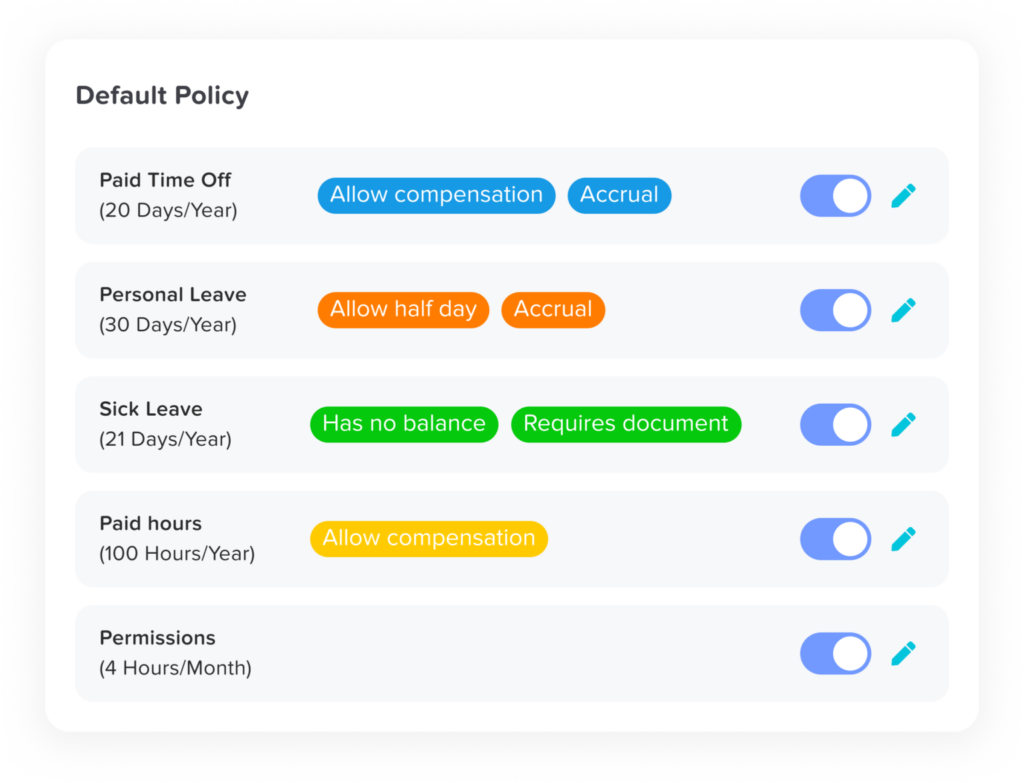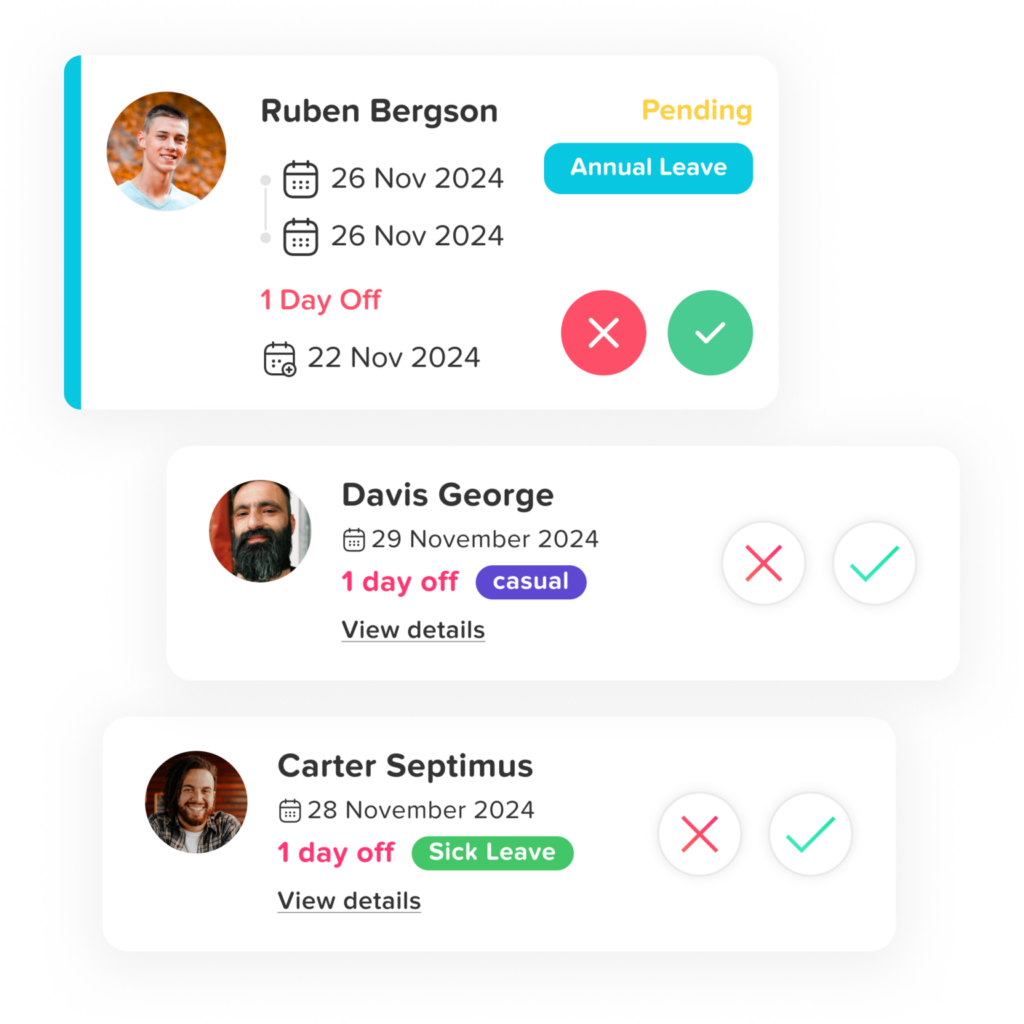Table of Contents
ToggleManaging employee leave shouldn’t be complicated but in many organizations, it still is. Traditional time off request processes are often slow, disorganized, and prone to errors. Emails get lost, spreadsheets go out of date, and approvals are delayed. In a world where efficiency and employee satisfaction are top priorities, these outdated methods no longer make sense.
Digital tools have emerged as the smarter solution. Platforms like Day Off are helping businesses move beyond manual methods, offering intuitive systems that handle everything from leave requests and approvals to PTO tracking and reporting. Let’s explore how digital tools simplify the time off process—for both employees and employers.
Pro - Day Off
- Unbegrenzte Anzahl von Mitarbeitern
- Mehrere Genehmiger
- Mehrere Teams und Standorte
- Mobile Apps for IOS and Android
- Integrations (Google, Teams, Slack and Outlook)
- Work Schedules
- 24/7 support
Why Your Old Time Off Request System No Longer Works
Traditional methods of handling time off requests like spreadsheets, emails, or paper forms often create more problems than they solve. Here’s why they fall short:
Lack of Transparency
Employees can’t easily view their leave balances or understand time off policies, leading to confusion and uncertainty.Disorganized Approval Process
Requests submitted through email or chat are easy to lose or forget, often resulting in inconsistent or delayed approvals.Overlapping Time Off Requests
Without a shared calendar, managers may approve conflicting requests, causing staffing gaps and reduced productivity.Prone to Manual Errors
Manually tracking PTO balances and updating spreadsheets increases the risk of mistakes that affect payroll and employee trust.Time-Consuming for Managers and HR
Chasing approvals, updating records, and resolving conflicts wastes time that could be spent on strategic tasks.Poor Record-Keeping
There’s no centralized system for tracking historical requests, making audits, reporting, or policy enforcement difficult.Not Scalable
What might work for a small team quickly becomes unmanageable as your business or workforce grows.
The Digital Transformation of Time Off Request
1. User-Friendly Self-Service for Employees
Digital time off tools put control in the hands of employees. With platforms like Day Off, users can:
Request leave in seconds via mobile app or web.
Instantly view remaining PTO, sick leave, and holiday balances.
Receive confirmation of approvals or denials without delay.
Access company policies related to leave within the platform.
This not only reduces dependency on HR but also increases employee satisfaction and trust in the system.


2. Efficient, Configurable Workflows for Managers
Managers no longer need to comb through emails or consult multiple calendars. With digital solutions:
Requests are automatically routed to the right approver.
Overlapping leave is flagged in advance.
Approvals or rejections are just a tap away.
Custom workflows can be set for different teams or departments.
This saves time and ensures consistency in leave decision-making.
3. Automatic Accruals and Balance Management
Time off tools calculate leave balances in real-time, factoring in:
Accrual policies (e.g., monthly or annually earned PTO).
Rollover rules (e.g., how much unused time carries over).
Carry-forward limits and expiration dates.
This automation reduces payroll errors and ensures fair, policy-compliant tracking for every employee.
4. Integrated Team Calendars and Scheduling Visibility
One of the most powerful features of digital tools is calendar integration. Managers and teams can:
See a shared calendar showing who’s off and when.
Prevent conflicts by aligning team schedules.
Plan projects and deadlines with full awareness of team capacity.
This improves team coordination, especially in departments with critical deadlines or seasonal workloads.
5. Mobile Accessibility for a Remote-Ready Workforce
As remote and hybrid work becomes the norm, mobile access is essential. Tools like Day Off offer:
iOS and Android apps for leave requests on the go.
Push notifications for updates and approvals.
Cloud-based storage so records are always available.
This supports distributed teams and ensures seamless operations regardless of location.
6. Policy Enforcement and Customization
Every company has unique leave policies. With a digital platform:
You can define unlimited leave types (vacation, sick, parental, bereavement, unpaid leave, etc.).
Rules can be customized for different countries, departments, or seniority levels.
Approval chains can be configured to match internal processes.
This ensures compliance while maintaining flexibility.
7. Centralized Record-Keeping and Reporting
HR and management benefit from having all leave data stored securely in one place. Digital platforms offer:
Historical records of all requests and decisions.
Exportable reports for payroll, audits, or compliance.
Analytics on time off usage, patterns, and peak seasons.
Such insights help in workforce planning and identifying issues like potential burnout or absenteeism trends.
Additional Benefits of Digital Time Off Request Tools
Beyond simplifying requests and approvals, digital time off tools offer several added advantages that help businesses operate more smoothly and efficiently:
Improved Employee Morale
A fast, transparent time off request process shows employees their time is respected, which boosts satisfaction and engagement.Reduced Administrative Workload
Automation cuts down on repetitive tasks for HR and managers, freeing them up to focus on higher-value responsibilities.Faster Onboarding and Policy Understanding
New employees can easily access leave policies and request systems through intuitive platforms, reducing the need for lengthy explanations.Consistency Across Teams and Departments
Standardized workflows ensure that all employees follow the same rules and approval processes, regardless of location or team.Real-Time Notifications and Updates
Both employees and managers get instant updates on request statuses, upcoming leaves, and balance changes eliminating guesswork.Better Planning and Coverage
Team calendars make it easier to avoid staffing gaps, plan projects, and ensure business continuity during absences.Legal and Regulatory Compliance
Accurate digital records help you stay compliant with labor laws and ensure fair treatment across your workforce.Data-Driven Insights
Access to detailed reports helps identify trends like excessive sick days, burnout risks, or underused vacation time.
FAQs
What is a digital time off request tool?
A digital time off request tool is software that allows employees to request leave and managers to approve or decline requests through an app or web platform. These tools also track PTO balances, manage calendars, and automate approval workflows.
How does a digital tool improve the time off request process?
It simplifies the process by:
Allowing requests via app or desktop
Automating approvals and notifications
Tracking PTO balances in real-time
Preventing scheduling conflicts
Centralizing all leave data in one system
Is a digital tool only useful for large companies?
Not at all. Even small teams benefit from digital time off tools by reducing manual tracking, improving accuracy, and freeing up time. Tools like Day Off are designed to be simple enough for small businesses and scalable for growing organizations.
Can these tools handle different types of leave?
Yes. Most digital leave management systems support multiple leave types, including:
Paid Time Off (PTO)
Sick leave
Parental leave
Bereavement leave
Custom leave categories based on company policy
What happens if an employee changes teams or roles?
Digital tools usually support flexible role management. When an employee moves teams, their leave history, balance, and permissions can be updated automatically without data loss.
Are digital time off request tools secure?
Yes. Reputable platforms use data encryption, secure authentication, and cloud-based backups to protect employee data. Always choose a provider with strong security credentials and transparent data practices.
How does mobile access help?
Mobile access means employees and managers can submit, approve, and check time off requests anytime, anywhere. This is especially useful for remote teams, field workers, or companies with flexible schedules.


